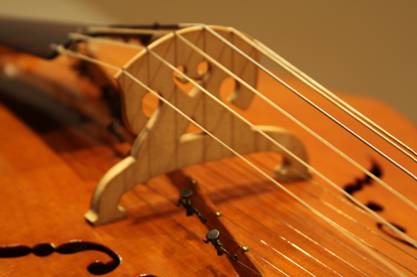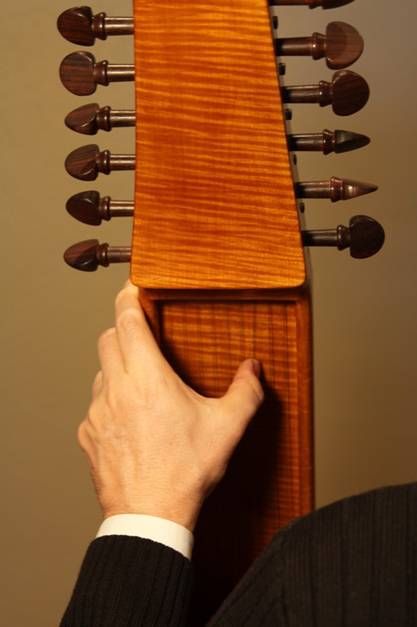- Home
- About
- About SCMS
- Directors
- Artists
- Vera Beths
- Steven Dann
- Marc Destrubé
- James Dunham
- Mark Fewer
- Eric Hoeprich
- Christopher Krueger
- Myron Lutzke
- Marilyn McDonald
- Douglas McNabney
- Mitzi Meyerson
- Pedja Muzijevic
- Anca Nicolau
- Jacques Ogg
- Loretta O'Sullivan
- Lambert Orkis
- Paolo Pandolfo
- William Purvis
- Marc Schachman
- Jaap Schröder
- Andrew Schwartz
- William Sharp
- Ian Swensen
- Lucy van Dael
- Ensembles
- Concerts
- The Collection
- Recordings
- Education
- Donate
Leopold Mozart, Wolfgang’s father, described the baryton as “one of the most charming of instruments. Like the gamba, it has six or seven strings. It has, however, a very wide neck, the back of which is hollow and open and into which nine or ten brass and steel strings are inserted, which may be plucked by the thumb while the principal part is played with the bow on the gut strings.” These un-fingered wire strings also vibrate sympathetically with the bowed strings. Mozart claims: “The word baryton comes from the Italian Bordone, which means a Tenor Voice; and means also a large string, a drone, and the soft humming of bees. He who knows this instrument will agree that the word Bordone rightly describes its tone.

The bridge holds the six bowed strings. Under its widely spread feet, the nine metal sympathetic strings,
lying close to the belly of the instrument, cross their own long, low, and straight bridge.

The sympathetic strings may be plucked with the thumb of the left hand.


